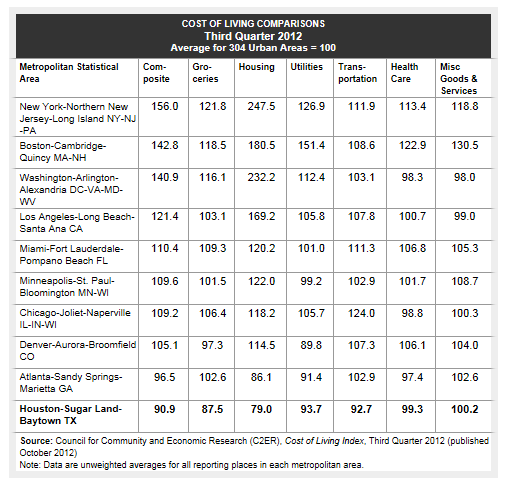
A number of researchers and commentators in the United States are scratching their heads over the decline in labour mobility, which is said to be increasing income inequality and reducing the nation’s potential economic growth, since labour is not shifting to where it is most needed.
A new article published in the Washington Monthly blames “housing affordability” for the underlying decline in labour mobility. Essentially, while well-paid jobs may exist in other locations, the cost of housing and commuting makes the shift no easy decision:
…until quite recently, what most distinguished Americans from other peoples was the high percentage of us who were willing to move from anywhere to anywhere to seek a better financial toehold…
This feature of American life has served the country’s economy well, if not always its culture.
…the high mobility of American labor meant that a comparatively high share of the nation’s workforce migrated to wherever it could add the most economic value. As the population reduced its concentration in lower-wage areas and increased it in higher-wage areas, the effect was to gradually reduce inequality of income and opportunity, until something like an “American standard of living” emerged in the twentieth century. All told, according to a 2013 paper by Harvard economists Peter Ganong and Daniel Shoag, approximately 30 percent of the drop in hourly wage inequality that occurred in the United States between 1940 and 1980 was the result of the convergence in wage income among the different states during this period.
…all of that has changed. Americans are moving far less often than in the past, and when they do migrate it is typically no longer from places with low wages to places with higher wages. Rather, it’s the reverse. That helps explain why, since the 1970s, income inequality has gone up and upward mobility has (depending on who you ask) either stagnated or gone down…
In the early 1950s, about 3.5 percent of all American households moved from one state to another in any given year. This proportion held up through the 1970s, and then started to fall around 1980. By 2006 interstate migration had dropped to 2 percent, and by 2010 to just 1.4 percent, or less than half the rate of the early 1950s. The latest available data, for 2011-12, shows interstate migration still stuck at a mere 1.7 percent. Though it may not square with our national self-image, America today is a nation of people who tend to stay put, with a population that is no more mobile than that of Denmark or Finland…
A far more plausible push factor is the cost of housing…
Tight restrictions on housing construction don’t keep out the affluent (who continue to migrate to places like Boston and New York and San Francisco). But they do reduce available housing for working people…
The underlying problem, however, isn’t the price of housing per se so much as its relationship to income. Since 2009, when the recession ended, the median price of a new house in the United States has risen 13 percent, even as median household income has fallen by about 4 percent. That doesn’t pose much of a problem for a migrating architect whose income is already well above the median, and who is likelier to have existing home equity that he can transfer to another state. But for construction workers, for example, it’s likely to be a big problem, and a reason why they can’t easily move to where the best-paying jobs are.
A construction worker can generally make more money in San Francisco than in suburban Fresno. But it won’t likely be enough more to make up the difference in the relative cost of living. Indeed, few working-class people earn enough money to live anywhere near San Francisco anymore, to the point that there is now a severe shortage of construction workers in the Bay Area…
It makes sense that poor housing affordability is a key barrier to moving to higher wage areas, like San Francisco or Silicon Valley, and that tight restrictions on housing supply are the primary cause.
Indeed, a quick examination of cost of living comparisons across major US metro areas shows that sunbelt regions where land suppy is liberal (e.g. Houston and Atlanta) have far lower cost of living, which makes them more attractive than the sexier cities, despite lower wages being on offer (see next table).

Overall, the article suggests that if the United States wants to raise labour mobility, improve income equality, and boost growth, it needs to abandon regulatory restraints on housing supply that raise the cost of living in the more affluent cities.

